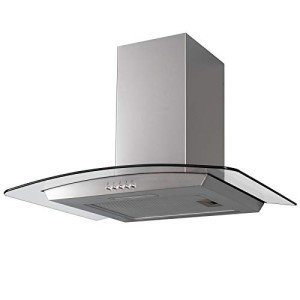9 Lessons Your Parents Teach You About Cooker Hoods Uk
페이지 정보
작성자 Gabriele 작성일25-11-05 01:20 조회4회본문
A Comprehensive Guide to Cooker Hoods in the UK
When it pertains to modern kitchens, cooker hoods (or range hoods) are a necessary appliance that combines design and performance. They not just improve the aesthetic appeal of a kitchen however also play an essential role in improving indoor air quality by eliminating smoke, grease, and smells produced during cooking. In the UK, there's a diverse variety of cooker hoods offered, catering to different choices and kitchen designs. This blog site post intends to supply a detailed summary of cooker hoods offered in the UK, covering types, features, advantages, and essential factors to consider when choosing the ideal one for your home.

Kinds Of Cooker Hoods
Naturally, choosing the ideal type of cooker hood is fundamental to guaranteeing it fits well within your kitchen space and fulfills your cooking needs. Below is a table summing up the various kinds of cooker hoods available in the UK.
| Type of Cooker Hood | Description | Installation Style | Best Cooker Hood For |
|---|---|---|---|
| Wall-Mounted | Attached to the wall above the cooker. | Mounted on the wall | Kitchens with a range or oven against a wall. |
| Island Extractor Fans | Suspended from the ceiling over an island cooktop. | Ceiling-mounted | Open-plan kitchens with island cooktops. |
| Under-Cabinet | Fits under kitchen cabinets, conserving area. | Installed under cabinets | Small kitchens with minimal area. |
| Freestanding | A standalone unit, integrating with cabinets. | Floor-mounted | Traditional or rustic kitchen designs. |
| Downdraft | Withdraws into the countertop when not in usage. | Constructed into the counter top | Modern kitchens and those with minimalistic designs. |
Secret Features to Consider
When selecting the perfect Cooker Hoods Uk hood for your kitchen, there are several essential functions that can impact performance and functionality:
Extraction Type:.a. Ducted: This type needs external ventilation and efficiently eliminates cooking smells.b. Recirculating: Uses filters to clean up the air before recirculating it back into the kitchen; suitable for areas without external ducts.
Filtering System:.a. Metal Grease Filters: Durable and reusable; can be cleaned up quickly.b. Charcoal Filters: Used with recirculating hoods; reliable in getting rid of odors however need changing frequently.
Noise Level: Measured in decibels (dB), consider hoods that operate at lower sound levels (listed below 70 dB) for a quieter cooking experience.
Suction Power: Measured in cubic meters per hour (m THREE/ h), a high suction power is essential for efficient smoke and odor removal.
Lighting: Integrated LED lights can enhance presence on your cooking surface area.
Control Options: Some designs feature touch controls, push-button control, or even smartphone compatibility for modern convenience.
Design and Finish: From stainless-steel to glass and even customizable alternatives, it's essential to choose a design that complements your kitchen decor.
Benefits of Using a Cooker Hood
Installing a cooker hood comes with numerous advantages, not only enhancing the kitchen environment but likewise enhancing cooking efficiency. Here are some advantages:
- Air Quality Improvement: Removes contaminants and promotes a much healthier cooking atmosphere.
- Odor Elimination: Prevents remaining smells from cooking, improving overall home environment.
- Minimized Grease Build-up: Helps preserve a cleaner kitchen by reducing grease deposits on walls and cabinets.
- Added Light: Often come with built-in lighting, improving presence while cooking.
- Aesthetic Appeal: Available in different designs, they can raise the visual of the kitchen.
Picking the Right Cooker Hood: A Checklist
Before purchasing, here's a handy checklist to direct your selection process:
- Assess kitchen size and layout.
- Figure out chosen setup type (ducted vs. recirculating).
- Calculate the needed suction power based on cooking practices.
- Evaluate sound levels during operation.
- Determine desired design and product (stainless steel, glass, etc).
- Look for additional features (lighting, controls).
- Think about upkeep requirements (filter types).
Often Asked Questions
1. How do I determine the ideal size of cooker hood for my kitchen?
To figure out the right size, measure the width of your cooking surface area. The Hood Cooker should be at least as broad as the cooktop to successfully capture smoke and smells.
2. How often should I replace the charcoal filter in a recirculating hood?
Depending on the usage, charcoal filters should usually be replaced every 3-6 months to ensure efficient odor elimination.
3. Is ducted ventilation much better than recirculating?
Ducted systems are generally more efficient in getting rid of smells and wetness, whereas recirculating systems are much easier to set up however may not vent steam and odors as thoroughly.
4. Can I install a cooker hood myself?
While some homeowners may choose DIY setup, working with a professional is a good idea for ducted setups to guarantee appropriate functionality and safety.
5. Is there a best season to purchase a cooker hood?
Sales can often be found throughout seasonal promotions, such as Black Friday or New Year's sales. However, brand-new item releases normally take place in the spring, so off-season might be a great time to find last year's designs on clearance.
Whether you're a devoted cook or just an occasional kitchen user, picking the ideal cooker Hood Extractor is a financial investment that improves your cooking experience, enhances air quality, and matches your kitchen decor. By understanding the types, functions, and advantages, you can make an educated choice customized to your individual requirements. Constantly keep in mind to consider functionality alongside design to guarantee your cooker hood becomes a valuable asset in your kitchen for years to come.























 Home
Home  고객센터
고객센터 




